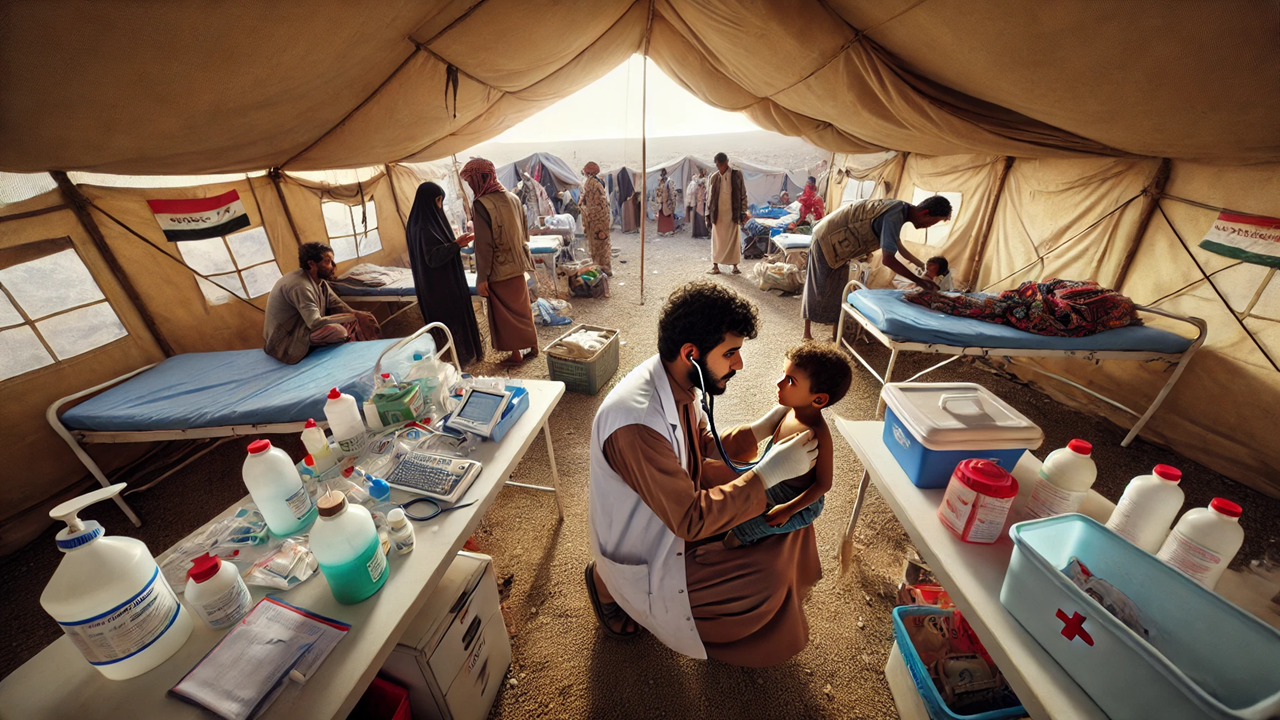Yemen’s Path to Health: WHO’s Strategic Plan for a Brighter Future
This article highlights WHO’s 2024–2025 Country Cooperation Strategy for Yemen, which aims to rebuild the nation’s health system after nearly a decade of conflict. The strategy focuses on four key priorities: promoting universal health coverage, enhancing emergency preparedness, fostering healthier lives, and using health initiatives to support peace. WHO’s collaborative approach with Yemen’s health authorities and international partners is crucial for the strategy’s success.

Yemen, a nation scarred by nearly a decade of conflict, is at a pivotal moment. As peace talks inch forward, the World Health Organization (WHO) has launched a new Country Cooperation Strategy (CCS) for 2024–2025, aiming to rebuild the nation’s health system and enhance the well-being of its people. This strategy, born out of urgency and hope, seeks to address the immediate health needs of millions while laying the groundwork for long-term resilience.
A Nation in Crisis: The Need for a New Strategy
Yemen’s healthcare system has been severely crippled by nine years of relentless conflict. With 21.6 million people in need of humanitarian assistance and 4 million internally displaced, the situation is dire. The ongoing conflict has not only devastated the country’s infrastructure but also led to the collapse of essential services, including healthcare.
The WHO’s last cooperation strategy with Yemen ended in 2013. Since then, efforts to establish a new strategy were repeatedly thwarted by escalating crises, including the world’s largest cholera outbreak and the COVID-19 pandemic. These challenges highlighted the urgent need for a comprehensive plan to address the health needs of Yemen’s population.
Dr. Arturo Pesigan, WHO Representative in Yemen, emphasized, “This strategy comes at a critical time for Yemen. It is not just about responding to emergencies but also about building a resilient health system that can withstand future shocks.”
Four Pillars of Hope: Strategic Priorities
The new CCS is built on four strategic priorities, each designed to tackle the unique challenges facing Yemen’s health sector. These priorities were developed through extensive consultations with Yemen’s Ministry of Public Health and Population, health authorities, and international partners.
Universal Health Coverage: The priority is to provide health care that promotes universal health coverage (UHC), with a particular focus on the most vulnerable. This includes strengthening health systems, ensuring access to essential medicines, and building workforce capacities. In a country where 18% of districts have no doctors, this is a monumental task.
Emergency Preparedness: Protecting the population by preparing for, detecting, and responding to health emergencies is the second priority. Yemen is no stranger to epidemics, with outbreaks of cholera, polio, and other diseases still rampant. Strengthening Yemen’s capacity to respond to these threats is crucial, particularly in a nation where vaccination coverage remains perilously low.
Promoting Healthier Lives: The third priority focuses on promoting healthier lives and well-being through a multisectoral approach. This includes addressing the determinants of health and risk factors, such as malnutrition and mental health. Nearly half of all children under five in Yemen suffer from stunted growth due to malnutrition, making this a critical area of intervention.
Health and Peace Dividend: Finally, the strategy seeks to promote a health and peace dividend to support resilient communities and foster social cohesion. Health initiatives can play a pivotal role in peacebuilding, and WHO aims to leverage this potential by fostering partnerships, promoting equity, and engaging communities in the health process.
A Collaborative Effort: Partnerships and Monitoring
The success of the CCS hinges on collaboration. WHO will work closely with Yemen’s health authorities, international partners, and local communities to implement the strategy. The United Nations Yemen Sustainable Development Cooperation Framework (UNSDCF) serves as a guiding framework, ensuring that WHO’s efforts align with broader development goals.
Monitoring and evaluation are key components of the strategy. WHO, along with Yemen’s Ministry of Public Health and Population, will regularly assess progress to ensure that the strategy remains on track. A mid-term review is scheduled for October 2024, followed by a final evaluation in October 2025. These evaluations will determine whether the strategy should be extended or if a new one should be developed.
Looking Forward: Building a Resilient Health System
As Yemen navigates its path towards peace, the CCS offers a beacon of hope. It is not merely a plan to address the immediate health crises but a roadmap for building a resilient, sustainable health system that can serve the people of Yemen for generations to come. The strategy’s emphasis on universal health coverage, emergency preparedness, promoting healthier lives, and fostering peace through health is a holistic approach that recognizes the complex interplay of factors affecting Yemen’s health landscape.
In conclusion, Dr. Pesigan’s words resonate deeply, “Health is the cornerstone of peace and prosperity. Through this strategy, we aim to not only save lives but also to lay the foundation for a healthier, more resilient Yemen.”
- FIRST PUBLISHED IN:
- Devdiscourse










